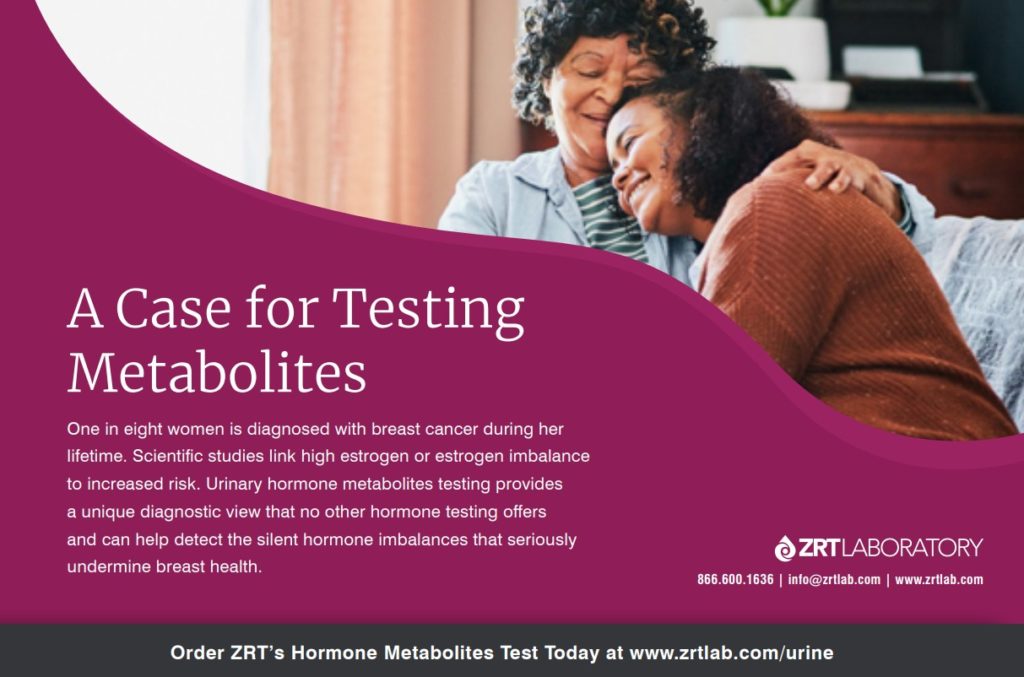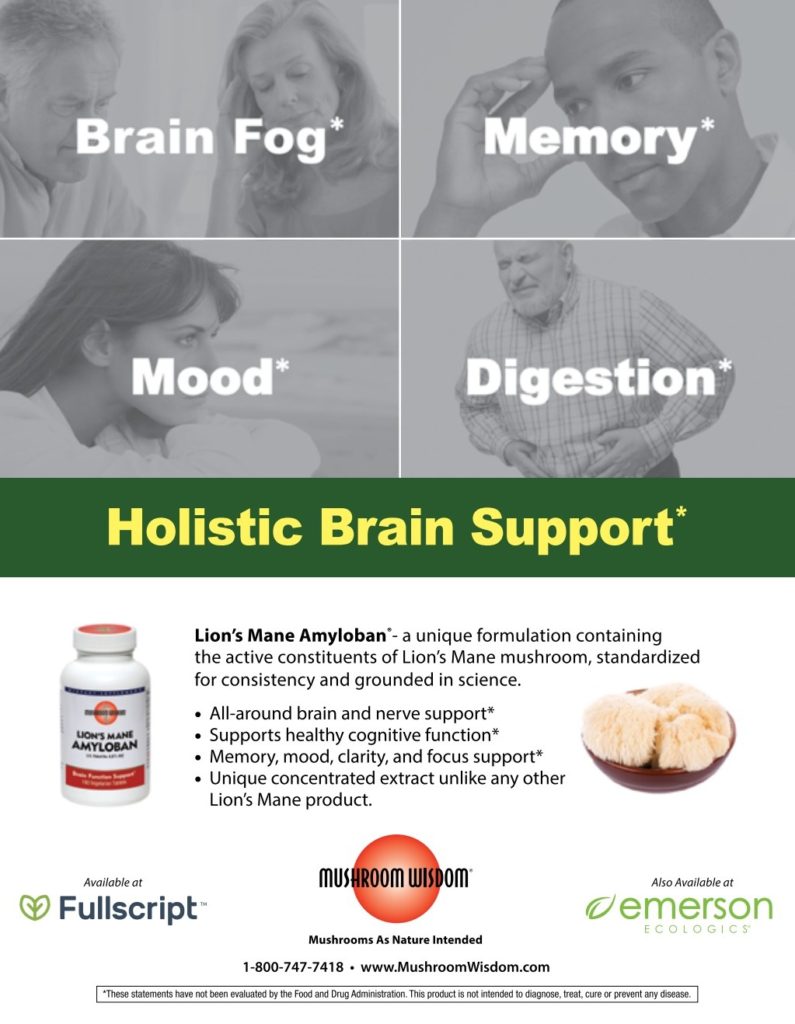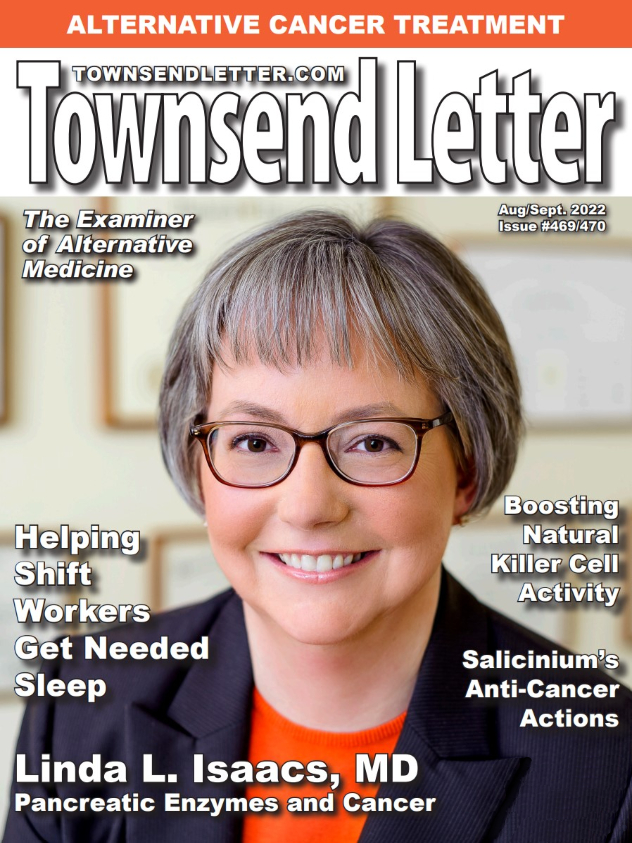By Professor Serge Jurasunas, MD(Hom), ND
Author of Cancer Treatment Breakthrough – Immuno-Oncology Using Rice Bran Arabinoxylan Compound
Abstract
Patients, but also doctors, are usually not well informed about the role played by a specific immune cell, known as the natural killer (NK) cell, and its relation to cancer. An NK cell can kill cancer cells directly without needing an antigen and, therefore, can kill more quickly. Considerable research into how NK cells function has been done over the past 20 years in order to improve cancer treatment, especially for high-risk patients.1
Natural killer (NK) cells are central components of innate immunity and play a pivotal role in responding to tumors with perforin and granzymes (cytotoxic granules). NK cells use either the intrinsic apoptotic mechanism or, independently of perforin, through TRAIL, an apoptotic protein that interacts with the receptor of the target cell. Under stimuli, natural killer (NK) cells also produce several cytokines, including IL12, IL10, IFN-γ , TNF, that in turn activate other immune cells (such as T-cells, macrophages), the maturation of dendritic cells, as well as the inhibition of angiogenesis.
In this article, we describe the mechanism and evidence of the NK cell as an immunomodulator with other anti-cancer properties. NK cells have a major role to play in cancer prevention and treatment and in viral infections as well. NK cells can be seen as a new, efficient, safe immunotherapy for malignant disease. A number of natural compounds, including mushrooms, rice bran arabinoxylan, and curcumin, enhance the efficacy of NK cells in controlling cancer.
Introduction
In 1975 Rolf Keissling and his Swedish colleagues discovered a type of T-cell that kills many types of tumor cells. Keissling named this effector cell “natural killer (NK) cell” because of its being able to kill directly and quickly a target cell without the need of an initial sensitization. It was proven that many types of cancer cells express high levels of ligands for NK cell receptors, which leads to their recognition and killing by NK cells2; and it is known that natural killer cells enhance immune surveillance3 and play an important role in both the adaptive and innate immune responses.
NK cells have been well established as innate cytotoxic effector cells in the lysis of target cells. Until recently conventional medicine has largely rejected the use of complementary and alternative medicine (CAM) agents because of lack of biological evidence. Over past years, however, several natural agents, working as biological response modifiers, have shown strong evidence for enhancing natural killer (NK) cell cytotoxicity and up-regulating NK cell numbers and activity.
Cancer – A Disease of the Immune System and Microenvironment
In addition to the malignant cell itself, which has been the central attraction in today’s oncology, cancer today is also viewed as a disease of the immune system and microenvironment as explained in my book, Cancer Treatment Breakthrough – Immuno-Oncology Using Rice Bran Arabinoxylan Coumpound. Today, oncology has finally given more consideration to the immune system as a weapon to treat cancer. According to Kevin Harrington of London’s Royal Marsden NHS Hospital, formerly Professor of Biological Cancer Therapies at the Mayo Clinic, the immune system is at the core of the puzzle of how we can treat cancer more effectively; immunotherapy has become the 4th pillar of oncology.4
For the past few years, immunotherapy has been used as a complementary therapy or as a replacement for chemo-radiation. Immunotherapy uses mononuclear antibodies to target checkpoint regulators PD-1 and PD-L1; however, this treatment has side effects and is not always efficient. A new line of evidence has shown that the P53 tumor suppressor gene may play a role in tumor immunology and that the modulation of the programmed cell death ligand, PD-L1, along with a loss of P53 activates tumor progression.5
Natural killer cells may be one new safe and effective direction to adopt in order to prevent or better treat cancer.6 Science is quickly moving with new evidence about the role that natural killer cells can play. My clinical work is also giving me a new opportunity to observe how we can better treat cancer by harnessing NK cells by using natural compounds.7
What Are Natural Killer Cells and Their Role in Cancer
Natural killer cells are one of our body’s most powerful defenses against cancer and are even considered the first line of defense against new invaders and cancer cells. It has been shown that NK cells can control both local tumor growth and metastasis due to their ability to exert direct cytotoxicity and to secrete immunostimulatory cytokines like IFN-γ. The active role of NK cells is not restricted to the killing of cancer cells; they also play a key role in affecting other immune cells such as T-cells, DC, and macrophages.
Natural killer cells are a type of cytotoxic lymphocyte critical to the innate immune system but also bridging the innate and adaptive immune system. They are large granular lymphocytes (LGL) and constitute a third kind of cell, differentiated from the common lymphoid progenitor-generating B and T lymphocytes. NK cells are known to differentiate and mature in the bone marrow but also in the lymph nodes, spleen, tonsils, and thymus as well, where they enter into the circulation and patrol from a resting state. They rapidly respond to virally infected cells, acting at around 3 days post-infection,8 and respond to tumor formation. NK cells express two types of surface receptors, activating and inhibitory receptors.9-10 The balance between the signals mediated in these receptors determines the outcome of NK cell activation or inhibition.
Recent studies on NK cell receptors have indicated the possible receptors responsible for tumor recognition and thus provide new support for the hypothesis of NK cell-mediated tumor surveillance. NK cells can directly recognize transformed cancer cells and kill them faster through lysis. However, NK cells—through inhibitory receptors that predominate over the activating signals—can recognize healthy cells and not destroy them; healthy cells express on their surface the MHC class I molecules (Major Histocompatibility Complex), which act as ligands for inhibitory receptors.11 MHC class 1 is deficient in most tumor and infected cells, leaving them vulnerable to NK cell killing. NK cells can eliminate target cells that do not express a sufficiently large number of MHC molecules. It has been proven that many types of tumor cells express high levels of ligand that lead to their recognition and destruction by NK cells.12
NK Cell Cytotoxicity

We know NK cells that patrol in a resting state become active in response to immuno-regulatory proteins called cytokines that interact with NK cell receptors. NK cells are regulated and activated by various cytokines such as IL1, IL2, IL15, IL18, IL21, and type 1 IFNs. In the case of tumor cells, active NK cells switch their inhibitory receptors to activating receptors in order to bind to cancer cells. Cytokines such as IL15, IL12, IL10, and IL18 enhance NK cell cytotoxicity against tumor target cells; and the production of IFN-γ by NK cells and can be seen as a new cancer immunotherapy.13
Enhanced NK cell function resulting in increased anti-tumor activity has been reported after IL15 administration to tumor-bearing mice.14 Additionally, IL15—either as a single agent or in combination with several antitumor drugs—was shown to increase the survival of mice that bear NK cell-sensitive tumors.15 Mice injected with IL15 showed an expanded NK cell population. IL15 stood out to be the most promising cytokine to be used for NK cell activation. IL15 plays an important role in the maturation and survival and homeostatic expansion of NK cells.16
A phase I clinical trial using an infusion of IL15 into the metastatic malignant patient showed proliferation and expansion of NK cells along with other anti-tumor immune cells, such as CD8+ T cells and gamma delta T cells.17 Evidence showed that IL15 could be used in future clinical trials in vivo or in vitro to enhance NK cell anti-tumor effects. However, IL10 is also a potent inducer of NK cell proliferation, cytotoxic function, and IFN-γ production in combination with IL18.
NK Cells Produce Cytokines
After activation, a natural killer cell produces cytokines and up-regulates effectors or adhesion molecules like perforin, granzymes, FAS ligand (FASL) and TRAIL (tumor necrosis factor-related apoptosis-inducing ligand). Cytokines produced by NK cells, in turn, activate other immune cells like B lymphocytes, T lymphocytes, and macrophages, and accelerate dendritic cells maturation.18
IFN-γ secreted by NK cells is one of the most potent cytokines and plays a crucial role in anti-viral, anti-bacterial, and anti-tumor activity. IFN-γ participates in cancer elimination by inhibiting cellular proliferation, including inhibition of angiogenesis,19 preventing the formation of blood vessels that the tumor needs to supply nutrients and oxygen for growth and expansion. IL12 secreted by NK cells also inhibit angiogenesis.20 Both IFN-γ and TNF-α can cause direct tumor necrosis by inflicting tumor-associated capillary injury, but they also generate an adaptive immune response by activating other immune cells. IFN-γ can also play a key role in the stimulation of dendritic cells (DC), increasing the destruction of cancer cells because DC also function as direct cytotoxic effectors against a tumor.21
NK Cell Direct-Killing Mechanism
NK cells become active in response to cytokines which first interact with inhibitory or activating receptors on NK cells and make a direct and rapid attack on cancer cells by releasing cytotoxic granules from their cytoplasm.22 NK cells attach themselves to the membrane of cancer cells receptors by first injecting cytolytic granules containing perforin,23 which is a membrane-disrupting protein that perforates the target phospholipid membrane forming pores that create an aqueous channel and permit the entry of other cytotoxic proteases called granzymes leading to DNA disintegration and apoptosis of the cancer cells.24,25 This channel implicates an intrinsic apoptosis pathway through the P53 tumor suppressor gene, mitochondria, and the binding of Bax that penetrate the mitochondria and lead to the release of cytochrome C. Cytochrome C combines with apoptotic protease activating factor APAF-1 and procaspase 9, leading to the formation of caspase 9 and to the subsequent activation of the caspase cascade, including caspase 3 that induces the death of the target cell.26,27 However, overexpressed BcL2 and downregulated Bax can suppress the intrinsic pathway, and overexpressed survivin can inhibit caspase 3 and caspase 7 activity, thus blocking the apoptosis of cancer cells.28
Survivin, an inhibitor of apoptosis, is highly expressed in breast cancer and other cancers and contributes to chemoresistance as well as stimulating angiogenesis and tumor growth.28 I have published several articles in Townsend Letter concerning P53 gene expression and survivin, especially the one called “The Molecular Basis of Prostate Cancer and Targeting Therapies,” where I describe the activity of survivin in this type of cancer and how it can be targeted.29 The reader can see some examples in my book that includes a chapter about P53, the Guardian of Our Immunity; there is a link between the P53 tumor suppressor gene and immune checkpoint PD-1 and PD-L2.
NK cells can use another alternative channel independent of the P53 tumor suppressor gene and perforin\granzymes to induce apoptosis via Fas Ligand (CD95) and TRAIL. TRAIL is a multifunctional transmembrane protein functioning as a death ligand normally expressed on the surface of natural killer cells and T-cells, macrophages, and dendritic cells. It plays a role in both T cells and NK cells to induce apoptosis and is being investigated as a new target for cancer therapy.30 TRAIL receptors activate apoptosis through cell-surface death receptors DR5 and DR4 that lead to the recruitment of the adaptor protein FADD, which activates intracellular apoptotic pathway by recruitment of caspases 8 and 10, which then cleave to the effector caspase 3 and, in turn, triggers apoptosis through the disintegration of the cell. TRAIL appears to be a second option that provides a rapid efficient route to apoptosis.31

But at the moment, the most investigated road to apoptosis by natural killer cells is through the secretion of perforin and granzymes, which also seems the fastest channel. An activated NK cell can kill a cancer cell in five minutes and repeat the process up to 27 times before dying. Circulating cancer cells are more easily destroyed by NK cells than those in a solid tumor, but it all depends on the concentration of immune cells and NK cells within the tumor. It has been shown that cancer patients have decreased cytotoxic NK cells activity compared to a healthy person (see Figure 2).32,33 Normally with activated NK cells, the majority of cancer cells that enter into the circulation are eliminated within the first 24 hours, thereby providing evidence of the central role played by NK cells in the control of metastasis.34 However, cancer patients have low levels of basal NK cell activity, such as 30%-50%, compared to a healthy person for several reasons; these include low levels of NK cells in the peripheral blood, tumor decreased production of perforin and granzymes,35 reduced expression of activation receptors, defective production of cytokines, and loss of ability to adhere to target cells. NK cell activity also declines with aging, producing less perforin and granzyme,which increases cancer risk and infection. Studies on animals done in the past have shown evidence that low NK cell activity results in increased tumor cell survival in the bloodstream and metastasis in secondary organs such as the lung.36 Some authors showed that a higher density of NK cells is an indicator of a good prognosis in breast cancer. An evaluation of natural killer cell activity in patients with different stages of breast cancer patients, pre and post surgery was identified.37

18 patients with breast cancer (invasive ductal carcinoma):
Stage 1 (n=2), Stage 2 (n=4); Stage 3 (n=5); Stage 4 (n=7).
The activity of the natural killer cells in various stages of cancer, pre and post surgery was different and consequently there is a significant correlation between disease stage and NK cell activity, where NK activity gradually decreases with the increase in cancer stage. (See Figure 4). Thus the main goal in breast cancer therapy is to increase NK cells, especially in stage III and IV. It also correlates with higher free radical activity in metastatic breast cancer compared with tumors with no metastasis.38,39
A variety of stressors can suppress NK cell function due to excessive free radical activity from physical or psychological stress, depression, trauma, anxiety, nutritional deficiency, heavy metal toxicity, etc. Psychological stress has a profound impact on NK cell activity. Surgical procedures also can induce significant immunosuppression, particularly profound suppression of NK cells affecting both cytotoxicity activity and cytokine production, thereby increasing the risk of metastasis. Many patients die from recurrence because of minimal residual diseases and micrometastasis present at the time of surgery.40,41 Chemotherapy can trigger excessive toxic free radical activity, inhibit immune activity, and contribute to the malignant progression of tumor cells, enhancing their metastatic potential. The more you undergo chemotherapy, the more you increase the level of oxidative stress, inflammation that activates COX2 and NF-KB that in turn stimulate angiogenesis, inhibit apoptosis the immune response, and induce resistance to chemotherapy regimens.40,41 As explained previously, the inhibitor of apoptosis, survivin, which is overexpressed in most breast cancers, is downregulated by oxidative stress—thus the correlation between free radical activity and survivin with the progression of the disease.42
If you follow your patients during a course of chemotherapy for a primary tumor or even after recurrence and a new chemotherapy regimen, you notice that it may exhibit a very strong persistent condition of oxidative stress that needs to be reduced since permanent oxidative stress is associated with metastasis condition. Of course, this depends on each patient and the type and stage of cancer. (See my book for an example of oxidative stress and stage of disease; also p 155-159 with a case of breast cancer). NK cells affected by ROS undergo ionic changes that cause them to lose their ability to adhere to target cells both in vitro and in vivo. Cumulative experience demonstrates the connection between oxidative stress, depressive disorders, and a higher risk of tumor growth, disease recurrence, and a higher risk of mortality, especially in breast cancer patients. This is probably due to decreased NK cells activity and mutation of P53 protein. Several factors may cause mutation of the P53 gene such as oxidative stress, tobacco, pesticides, or bacteria. These can all induce mutation in the P53 gene.
NK Cells Are Modulated by the Tumor Microenvironment
In recent years, the tumor microenvironment (TME) has received increasing attention due to its crucial roles in tumor immune suppression, distant metastasis, local resistance, and targeted therapy response.43,44 Today we just realize that the TME is as important as the tumor itself. Multiple factors determine whether tumor cells will be eliminated by the immune system or escape because of defective immune cells or immunosuppression (see Figure 5).

Tumor growth occurs more easily in a hostile environment. In fact, growing evidence has shown that tumors cannot develop in a healthy environment. In early tumor growth, there is a reciprocal relationship developed between cancer cells and the components of the TME that support tumor growth, cell survival, local invasion, and metastatic dissemination. The composition of the TME varies between tumor types and stage of the disease, but hallmark features include cancer cells, fibroblasts, endothelial cells, immune cells, blood vessels, epithelial cells, myeloid-derived suppressor cells, stromal cells, and the extracellular matrix (ECM). TGF-B cytokines produced by tumor cells in the TME is highly immunosuppressive; they can shut off the normal immune system and increase the resistance of cancer cells by suppressing the immune response of NK cells. Tumor cells can also adopt another important strategy for immune evasion by recruiting T regulatory (Treg) cells in the microenvironment with immunosuppressive effect.45 Liyanage and colleagues (2002) showed that Treg cells are increased in the peripheral blood and greatly increased in the TME in humans with breast cancer carcinoma, which as a consequence suppresses the NK cell cytotoxicity. TGF-B not only suppresses immune cells but also apoptosis and contributes to activating angiogenesis and is highly associated with breast cancer metastasis invasion to the bone and lung.46,47 As a direct effect, TGF-B limits NK cell cytotoxicity and IFN-γ production, downregulating the expression of NKP30 and NKG2D and its ligand, MICA in cancer patients.48
Excessive free radical activity (reactive oxygen species) in the TME promotes inflammation and in turn activates COX2 and NF-KB that also suppress the immune response and apoptosis. Chronic inflammation is a well-accepted hallmark of cancer that provides a favorable microenvironment for tumor initiation, progression, and metastasis.49 This is why, as previously explained, it is important to do some testing about the stage of inflammation of the patient, especially during a course of chemotherapy. Another abnormal condition is hypoxia and an acidic microenvironment that obliges the tumor to produce growth factors such as VEGF in order to get an oxygen supply and nutrients. Hypoxia can also have a bad effect on NK cell receptors NKp46, NKp30 with less secretion of perforin and granzymes.50
Of course, tumors become infiltrated with diverse innate and adaptive immune cells; the killing of cancer cells is dependent on the quality and quantity of infiltrated immune cells such as T cells, NK cells, etc. Some tumors, known as cold tumors, do not respond to immune attacks because they are surrounded by immunosuppressive cells, such as myeloid-derived suppressor cells (MDSC), and keep T-cells from trying to move into the tumor and killing it. NK cell function also is impaired so cold tumors usually do not respond to immunotherapy.51 Some bad cancers such as pancreatic cancer and glioblastoma, the most devastating malignant form of primary brain tumors, are typically cold tumors and therefore do not respond to immunotherapies or poorly to chemotherapy. Additionally, human studies in glioblastoma have demonstrated that TGF-B is overexpressed.52 Both apoptosis and immune response is suppressed, thus cancer cells can grow faster and escape from chemo/radiation apoptotic pathway killing. WT P53 regulates TGF-B while mutant P53 is known to distort TGF-B signaling, which paradoxically displays both tumor-suppressive and pro-oncogenic functions.53 I have published several articles in the Townsend Letter about the function of P53 gene expression and mutant P53 in human cancers that support tumor growth and are linked to a poorer prognosis.54
The Role of the P53 Gene in the Tumor Microenvironment
In the tumor microenvironment (TME) P53 tumor suppressor gene plays a crucial role; it recently emerged as an important regulator of the antitumor immune response at a different level. However, it has been shown that P53 can modulate immune cells in several ways. It has been clear now that the P53 status of the cancer cells has a profound impact on the TME.55,56 For instance, it is now accepted that P53 dysfunction in various compartments of TME leads to immunosuppression and immune evasion. While WT P53 (wild type P53) regulates inflammation in the TME through signal transduction, P53 dysfunction/mutated P53 enhances the production of inflammatory cytokines such IL-6 and IL12 from macrophages and activates NF-κB that in turn promotes immunosuppression and evasion of the tumor. Activated or reactivated P53 function reverses the immunosuppression and enhances anti-tumor immunity.57
We understand now that loss of P53 function in cancer cells modifies the immune environment since it results in profound changes in cytokine and chemokine secretion with important effects on the immune environment. The P53 gene as a transcription factor may modulate PD-1 and PD-L1 checkpoint inhibitor receptor expression through pattern recognition receptors, cytokine production, and expression of MHC.58 Thus activation of the P53 may also modulate the various types of immune cells in the TME, including the inhibition of the immunosuppressive Treg cells.59 The loss of P53 function, which occurs in the majority of advanced tumors, can impair immune surveillance of tumors by decreasing the efficiency of NK cells. WT P53 boosts the recruitment of NK cells within the tumor and potentially the activation rate of the NK cells that reach the tumor. WT P53 tumor suppressor gene or reactivation of the P53 gene can activate an anticancer response via direct transcriptional regulation of the NK cell ligands and ULBP1 and ULBP2, which connect to activating receptors expressed at the surface of NK, leading to the enhanced killing of tumor cells.60 Additionally it has been observed, in vitro and in vivo, a strong induction of various important chemokines and cytokines as well as NK cell-activating IL11, IL12, and IL15 from P53. The success of killing cancer cells in a tumor is mainly dependent on the apoptosis pathway through the P53 tumor suppressor gene and on the quantity and quality of immune cells within the tumor.
At the tumor bed, NK cells may control tumor growth by interacting directly with tumor cells through interaction with other immune cells.61 However, loss or mutation of P53 in cancer affects, as earlier mentioned, the recruitment and activity of NK cells, cytotoxic T cells within the tumor, and killing of cancer cells. Several tumor biopsy specimens from several solid tumors have revealed little NK cell infiltration into the tumors. It has been shown that a high density of NK cells infiltrated in the tumor has been linked with a good prognosis in multiple solid tumors. However, there are cases of tumors that appear to be refractory to NK cell-mediated killing because of a presence in the immunosuppressive microenvironment, such as the activity of Treg cells. Tregs can be abundantly present in primary breast tumors and metastasis. Several studies have reported that high Treg infiltration in primary tumors and sentinel lymph nodes is associated with the occurrence of lymph node metastasis. Tregs occupy a central role in breast cancer initiation and progression and provide critical support to metastasis formation.62,63 Depletion of Treg cells markedly inhibits tumor growth. Any natural substances that can shut off or prevent the development of Treg cells in breast cancer could enhance immunity and assist in tumor killing.63 Today, P53 has become an attractive topic of interest in the literature of cancer biology. Targeting P53 in the TME represents an immunologically desirable strategy for reversing immunosuppression and enhancing antitumor immunity.64
Enhancing NK Cells to Target Tumor Cells
Several recent articles published in various countries have shown that reactivating the immune system to treat cancer using natural compounds is now attracting oncologists.65 Why? While conventional immunotherapies have shown some benefits in some types of cancer, others such ovarian cancers, for instance, still have high recurrence and mortality.66 For this reason self-reactivating immune cells with natural compounds may offer a better anticancer response.
For several decades I have been using some natural compounds that have shown efficacy in improving the condition of my patients, such as reduction of tumor size and tumor markers, improving anemia, and a better quality of life. More recently in a case of pancreatic cancer with multiple lesions in the liver and a CA 19-9 at 12134, the CA 19-9 measure dramatically decreased to 2466 after one month of treatment. Many types of supplements available online are just for commercial business but not with therapeutic value.

Several natural compounds have been proposed as a novel therapy that may improve cancer treatment and patient survival, and it is true if using RBAC as I describe in my book. Several compounds have shown efficacy in enhancing immune activity, especially NK cells, but also in activating apoptosis, decreasing inflammation, regulating genes, and slowing down or inhibiting tumor growth.These compounds include a variety of mushrooms such maitake, reishi, and agaricus, that contain beta-glucans that increase T-cell proliferation, macrophages, dendritic cells, and NK cell activity.67 These mushrooms have also the capacity to modulate a number of cytokines, such as NF-κB and TGF-B1, and angiogenesis.68 Phytochemicals, including resveratrol, curcumin, genistein, quercetin, and apigenin, are known to activate the P53 tumor suppressor gene and target other genes such Bax, survivin, BcL2, and activate caspases effectors.
Curcumin, which I fully describe in my book may be one of the most important anti-cancer compounds with efficiency in regulating immune cell activity, including NK cells and dendritic cells besides acting as a strong antioxidant and inhibiting NF-κB activity. Now my book is based on the clinical application of rice bran arabinoxylan compound (RBAC) that I have used for the past 28 years because it has shown superiority over many other natural biological response modifiers (BRMs).

RBAC has demonstrated a strong efficacy to enhance NK cell activity by increasing the secretion of perforin, granzyme, and adhesion to the target cells.69 RBAC is also a potent activator of dendritic cell maturation and function, and thus not only does it increase the anti-cancer effect but can be used as a support of dendritic cell vaccination. The basis for this mechanism of anticancer effects of RBAC is founded in its ability to act as a potent biological response modifier; it has already been identified as a potent cancer immunotherapy. As explained in the article, IL12, IL15 stand out to be the most promising cytokines to be used as activators of NK cells. Taken orally, RBAC increases the production of IL12, IL15, and IL18, which in turn augments and increases NK cell activity and enhances immune cells to secrete IL15, IL12, IFN-γ that activate other immune cells and inhibit angiogenesis.70 In a study, breast cancer patients had a decrease in NK cell activity and decreased level of IFN-γ; NK cell activity was 175% lower and TNF-α activity was 100% higher.71 We can understand the important role that RBAC can play in the treatment of breast cancer, in fact as a complementary therapy in conventional cancer.72 Not only does RBAC enhance NK cells and other immune cells but also inhibits Treg cells with immunosuppressive effects.
RBAC works in synergy with curcumin to inhibit Treg cells and to increase apoptosis thus augmenting the killing of cancer cells.73 One case of breast cancer recurrence with multiple metastases that got worse during chemotherapy was almost eliminated when I prescribe RBAC conjointly with liposomal curcumin (page 163). Using RBAC together with curcumin even increased the inhibition of Treg cells. One of the advantages of RBAC is that it keeps the same efficacy even after taking it for several years. RBAC does not exhibit hyporesponsiveness. Oral administration of RBAC for seven years by cancer patients resulted in enhanced NK cell activity, which was maintained at a high level over the seven-year period with no toxicity.74

However repeated administration with other BRMs resulted in depression of NK cells activity over this period of time.75 In my practice I have used RBAC with different types of cancer patients for a period of up to seven years, such as with several cases of multiple myeloma, resulting in stabilization of the disease. You can see in my book the story of a young boy with a Ewing Sarcoma that has been taking RBAC for now, a period of six years. It kept the remaining spinal tissue tumor dormant, which in my opinion validates this compound. Treatment with RBAC causes a remarkable increase in NK cell activity in various cancers after a period of one and two weeks: breast cancer 154-332%; prostate 174-385% (this is why RBAC is so efficient in prostate cancer); multiple myeloma 100-537%. Not only does RBAC enhance NK cell activity but it also works as a cytokine therapy to inhibit and decrease tumor growth, with chemotherapy and without chemotherapy.

I gave an example of RBAC without chemotherapy in my book. A whole book is necessary to describe the effects of RBAC as an antioxidant defense as it increases apoptosis by decreasing BcL2, thus improving the ratio BAX/BcL2, which in turn increases the killing of cancer cells. RBAC plus radiotherapy further increased upregulation of P53 and Bax expression by 284% and 244.1% respectively, and BcL2 expression was suppressed by 95.4%.76 So RBAC is working in synergy with radiotherapy and chemotherapy (see Figures 9 and 10) and should be used as a support for cancer patients and also to minimize or avoid metastasis or disease recurrence, especially in breast cancer with metastasis to bone, lung, brain, which is very common.
Conclusion

We can improve the quality of life of the patient, avoid metastasis condition, minimize adverse effects, increase patient lifespan, as has been demonstrated with RBAC in various studies.77 We can also improve the efficacy of conventional therapy by using a leading BRM such as RBAC which in fact, is used by thousands of doctors all over the world.
In my book, I give details of a study done at the Mayo Clinic in Jacksonville, Florida, by a group of medical doctors using RBAC on lung cancer and also the results of several studies done with RBAC at the University of Miami. The real revolution is the way to enhance NK cell activity without toxicity by using RBAC—which is not the case with the new CAR T cells that can be effective against some types of cancers but can also cause serious or even life-threatening side effects, not to mention the very expensive cost. Natural compounds could be what oncology has been searching for: a new, simple, efficient immunotherapy that targets multiple avenues without toxicity.
RBAC is available as MGN3 or Biobran in Europe and was sold in the past in the US as MGN-3 and is now available as BRM4.

Serge Jurasunas is an internationally well-known practitioner and researcher in complementary oncology and molecular medicine besides being a naturopath and a fervent believer in nutrition and detox since 1967. Serge Jurasunas, Professor of Naturopathic Oncology has devoted over five decades to treating all kinds of diseases and cancer of all types and grades, developing innovative therapies and being a pioneer in several approaches. He is the author of over 150 papers and eight books in three different languages. For the past 15 years, he has devoted much time to the study of the P53 tumor suppressor gene with clinical application. Professor Serge Jurasunas is a frequent contributor to Townsend Letter and maintains a private part-time practice only for cancer patients but also with outside patients from several countries via E-mail and Skype.
Contact Information:
Skype: sergejurasunas
Blog: https://naturopathiconcology.blogspot.com
Slideshare: https://www.slideshare.net/sheldonstein
Phone: 351-912565038














